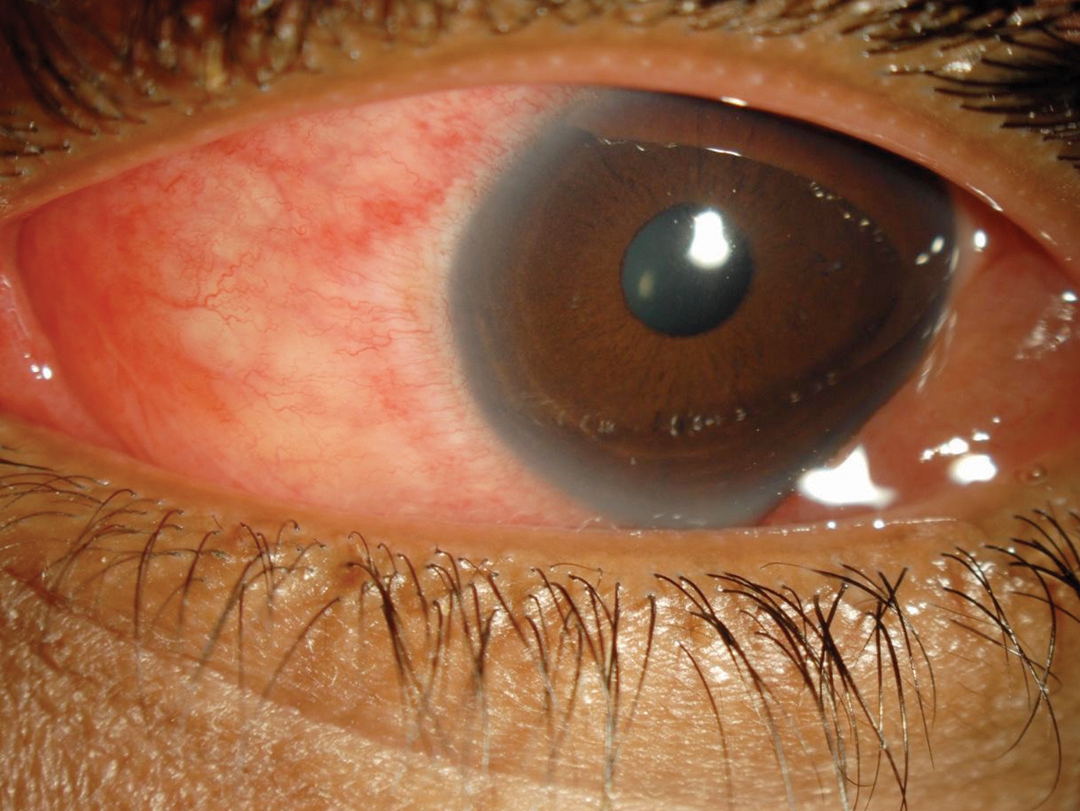A visit to the Academy meeting isn’t complete without taking in the ever-popular two-part course offered by the legendary “Melton and Thomas” duo—Randall Thomas, OD, FAAO, who is in a private group practice in Concord, NC, and Ron Melton, OD, who is in a group practice in Charlotte, NC.
Just as the president reports each year on the State of the Union, Drs. Melton and Thomas will give their unique take on the status of eye care advances in “The State of Therapeutics in Eye Care.” The sessions will happen October 10, 9-11am (Part 1), 11am–1pm (Part 2).This year, the doctors will delve into the medical management of patients using topical and oral pharmaceutical agents, off-label applications, in-office procedures and diagnostic assessments. Tomorrow’s four-hour session will surely be filled with straight talk from the famously candid duo who don’t pull any punches.
 |
EKC is one of the most common causes of “red eye” presentations. Though viral in nature, many patients incorrectly receive an antibiotic treatment, particularly those seen in hospital emergency departments. |
“Our two lectures serve two key purposes: one, to make certain the attendee understands the numerous threats facing our profession; and, two, to enable our doctors to keep more patients in our practices rather than continue the pathological levels of unnecessary referral,” Dr. Thomas says. “Optometry needs to quickly evolve into medical eye care specialists!”
As online providers expand their offerings from vision testing and eye wear sales into refractions and prescription fulfillment, Drs. Melton and Thomas will continue to sound the alarm for optometrists: “expand your scope of patient care services to protect your future!”
The Eye and the ED• Why people go to the ED with eye problems
• Mean ED charge for eye visit = $989.30 • Eye visits: 1.5% of all visits • 400,000 ED visits per year for eye injuries, and children represent up to one-third of those injured |
“We have no doubt that technology will continue to evolve, but, at least for now, if you want optimum care, see an optometrist!” Drs. Melton and Thomas urge.
In Part I, the doctors will touch on remote intraocular pressure tonometry, eye drops for presbyopia and the importance of spending time with patients. As well, Oxervate (cenegermin 0.002%) for neurotrophic keratitis, Regener-Eyes for dry eye disease, the “drug wars” from the 1990s through the 2010s and various drug classes (i.e., beta-blockers, antihistamines, prostaglandins and steroids) will be covered.
Treatment for Thyroid-related Proptosis• New breakthrough drug to reduce proptosis • Tepezza™ (teprotumumab) Horizon Therapeutics • 75% achieved ~2.5mm reduction in proptosis • I.V. infusion every 3 weeks for 8 sessions • Mild to moderate side effects: muscle spasm, nausea, alopecia, diarrhea, fatigue hyperglycemia, hearing loss, dry skin, dysgeusia, headache • Cost is about $100,000.00 for six-month treatment |
Drs. Melton and Thomas will overview loteprednol etabonate, discuss the literature’s take on steroids and IOP elevation, and provide their perspective on off-label use of various drugs. In addition, scleral depression, vitreous floaters and retinal detachments will be addressed. Moreover, they won’t shy away from FDA pregnancy categories, HSV infection, systemic prednisone and oral prednisolone.
Adenoviral Infections• Common cause of “red eyes” • Assume adenovirus until proven otherwise • Often have preauricular node • Non-purulent, watery discharge • Usually starts in one eye and spreads to fellow eye in a few days • Always evert lids to survey tarsal conjunctiva • With EKC, spotty subepithelial infiltration in 50% to 75% of untreated cases • Pseudomembranes are a frequent complication of EKC |
Part II will shift the focus to Qbrexza (glycopyrronium tosylate), the new thyroid-related proptosis treatment Tepezza, idiopathic orbital inflammation, eye-related reasons for emergency department visits, acute conjunctivitis and antibiotic use, adenoviral infections, povidone-iodine 5% ophthalmic solution and the literature’s take on adenoviral keratoconjunctivitis.
The pair will provide a glaucoma update—including a discussion of the number of ODs who are managing glaucoma (which they find to be “relatively few”), and the latest therapy options and procedures. How important are preservative-free drugs? Find out in this talk. They will also drive home the importance of documentation to avoid litigation
Moving onto ocular allergies, Drs. Melton and Thomas will lay out the wealth of treatment options for patients, before touching on antiviral medications and capping off the lectures with dry eye management and the doctors’ dry eye management algorithm.
